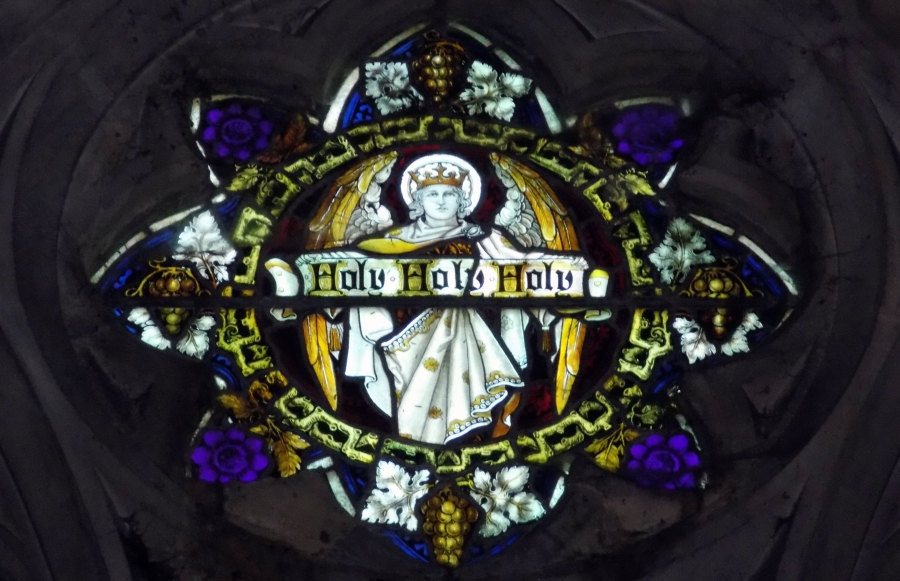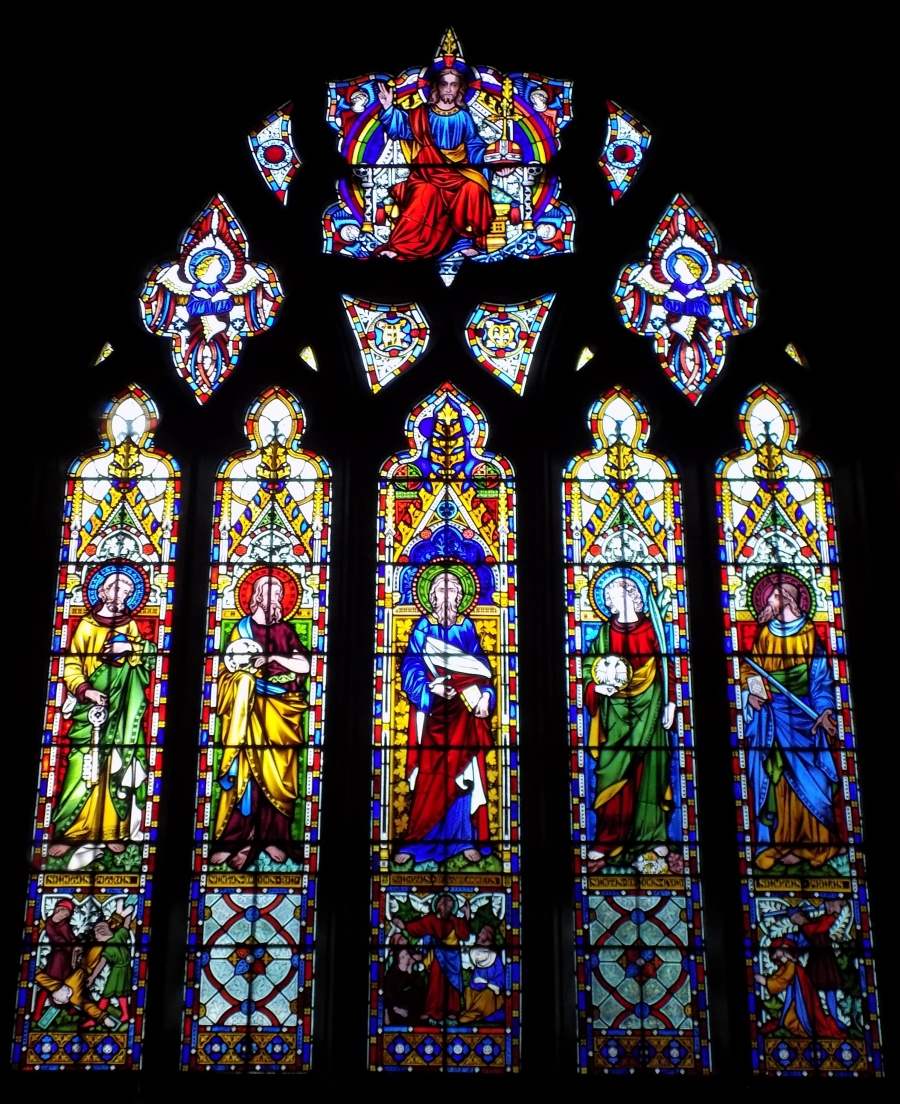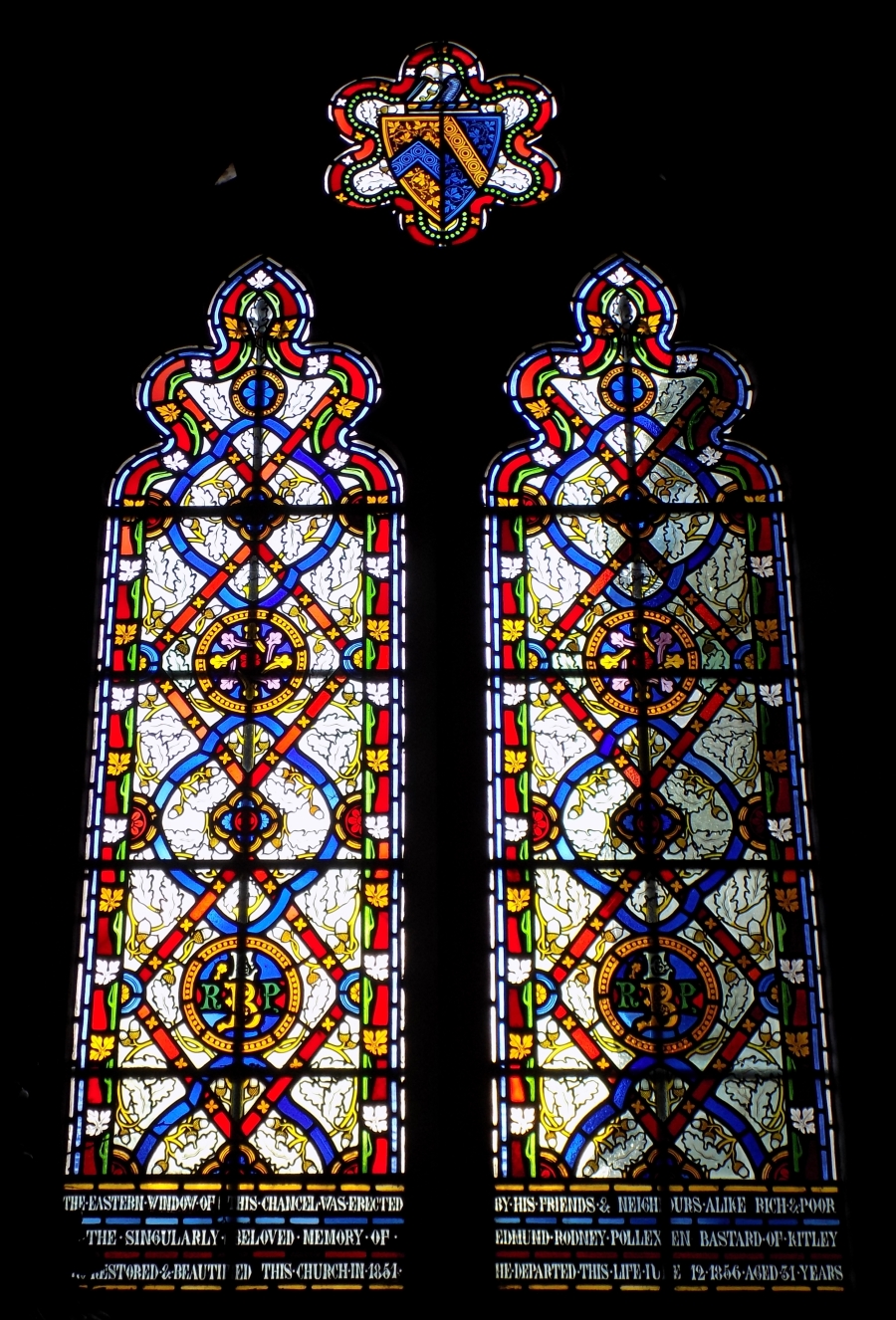The Bastard’s of Kitley and St Bartholomew’s Church, Yealmpton
The somewhat unfortunately named Bastard family were the landed gentry family of Kitley House, near Yealmpton, Devon.
The Bastard’s were a well connected family; many generations being Tory politicians and Sheriffs of Devon.

Edmund Rodney Pollexfen Bastard
Of interest to me, and to all ecclesiologists should be Mr Edmund Rodney Pollexfen Bastard, 1825-1856.
During his short life, he died at the age of 31, he had ruffled the feathers of the “establishment” by converting to the Church of Rome in November 1850.
It had been long known he was, to use a mid-C19 term a “Puseyite” – the derogatory term for those who appreciated the Catholic side of the Established Church – the Church of England. His conversion Roman Catholicism occurred after the Restoration of the Hierarchy in 1850 at a time when there was a great anti-Catholic sentiment amongst Protestants.
The son of Edmund Pollexfen Bastard and his wife, Anne Jane Rodney, (granddaughter of Admiral Rodney), he was born in London on 7 September 1825. He was baptised at All Souls Church, Marylebone on 13 December 1825.
In due course, as the first son, he succeeded his Father (who died in 1838). Edmund followed a typical upbringing for the son of a Gentleman. He entered Balliol College, Oxford and matriculated on 30 March 1843 aged 17. He achieved his Bachelor of Arts in 1846, and his Master of Arts in 1849.
It was during his later years at Oxford that his philanthropic mind was turned towards the repairs needed at his local parish church, St Bartholomew’s, Yealmpton.
The Rev. H. J. Warner, Vicar of Yealmpton in his ‘A History of Yealmpton’, published in 1907 records that:
In the year 1846-47 the church was re-roofed, but the old walls were too weak to bear the weight, and a re-building was absolutely necessary. Accordingly, at a vestry meeting held on January 15th, 1849, the churchwardens, Messrs. Thomas Parnell and Henry Ford, were empowered, with the consent of the Bishop and Vicar, to borrow £1000 on the security of the Church Rates. The loan was obtained from Mr Hurrell, of Ham, Loddiswell, to be repaid in ten years, with interest at the rate of five per cent.
The rest of the cost was borne by Mr E. R. P. Bastard. The architect chosen was the famous Mr W. Butterfield, who was then only thirty-five years of age. Apparently, no expense was to be spared, and the work was begun and continued on a most lavish scale. But alas! it was never finished.
Mr Bastard “went over” to Rome, and the re-building of the church, together with what is now the Infant School, abruptly ceased.
And so it was that Mr Bastard was able to spend some of the family’s wealth on the rebuilding of the parish church.
Warner alludes to the conversion of Bastard and that work then ceased on the church – funds drying up – Bastard’s attention had turned to the creation of a Roman Catholic chapel for Yealmpton – of which more in a later post!
Edmund married Florence Mary Scroope, of Danby in November 1853 and he enjoyed a short marriage.
Warner completes the story on Mr Bastard:
Mr Bastard died in 1856, and in 1860 the east window was inserted in token of the esteem in which he was held by the parishioners…
[This is incorrect, the window was installed in 1858]
… The contributions exceeding the cost of the window, the smaller (south) window in the chancel was added to the memorial, and bears the following inscription:
“The Eastern Window of this Chancel was erected by his friends and neighbours, alike rich and poor, to the singularly beloved memory of Edmund Rodney Pollexfen Bastard, of Kitley, who restored and beautified this church in 1851. He departed this life June 12th, aged 31 years.”
The legacy of Edmund Bastard is still, thankfully, evident 160 years after his death. The beautiful church of St Bartholomew’s still gleams with the glorious memorial windows and marble.

The installation of the glorious east window was reported in the local press. The Plymouth, Devonport and Stonehouse Herald, of Saturday 27 March 1858 reported:
YEALMPTON CHURCH
This truly beautiful church had just received an additional ornament by the erection of a painted window, which has been placed at the eastern end of the chancel. This window was purchased by subscription, and was erected by the tenants and friends of the late Edmund Bastard, Esq., of Kitley, in this parish, as a memorial of their regard for him, both as a landlord and a gentleman.
In the centre light of the window is a full length figure of St Bartholomew; in the two lights on the right are similar paintings of St John the Evangelist and St Paul; in those of the left are figures of St John the Baptist and St Peter. Underneath the central figure is a smaller picture, representing St Bartholomew in the act of preaching the Gospel to the poor, on each side of which are representation of the martyrdoms of each apostle being respectively underneath the large figures of the same. Above the centre figure in the large light at the top of the window is our Saviour, with attendant angels, coming to judge the world, on each side of which, in the smaller lights, are the sun and moon, in deep red colours, while in the larger lights on each side, which are a little lower are attendant angels. The whole delineation is extremely beautiful, and the colouring rich and chaste. The principal figures stand out in prominent relief, and show this work of art to be a perfect masterpiece, while the subdued light which is thrown upon the chancel adds in no small degree to the elegance and beauty of the eastern end of this splendid building.
The plain and touching inscription to the memory of Sir Christopher Wren might have been used to perpetuate the memory of Mr Bastard without any other memorial – “Si monumentum requiris, circumspice” – for he spend many thousands in the restoration of this church. But the originators of the present memorial preferred the erection of something which should be purchased by themselves in remembrance of him, and this masterpiece is well calculated to give to that feeling intensity and satisfaction.
It is but due to Mr Hardman, of Birmingham, to state that the window was made by him.
The modern historian and church lover can only but echo the sentiments of the article above. Hardman of Birmingham were at that time one of the leading and very best stained glass manufacturers in the world. Their quality shines through to this day.

© Graham Naylor
1 Comment
Comments are closed.